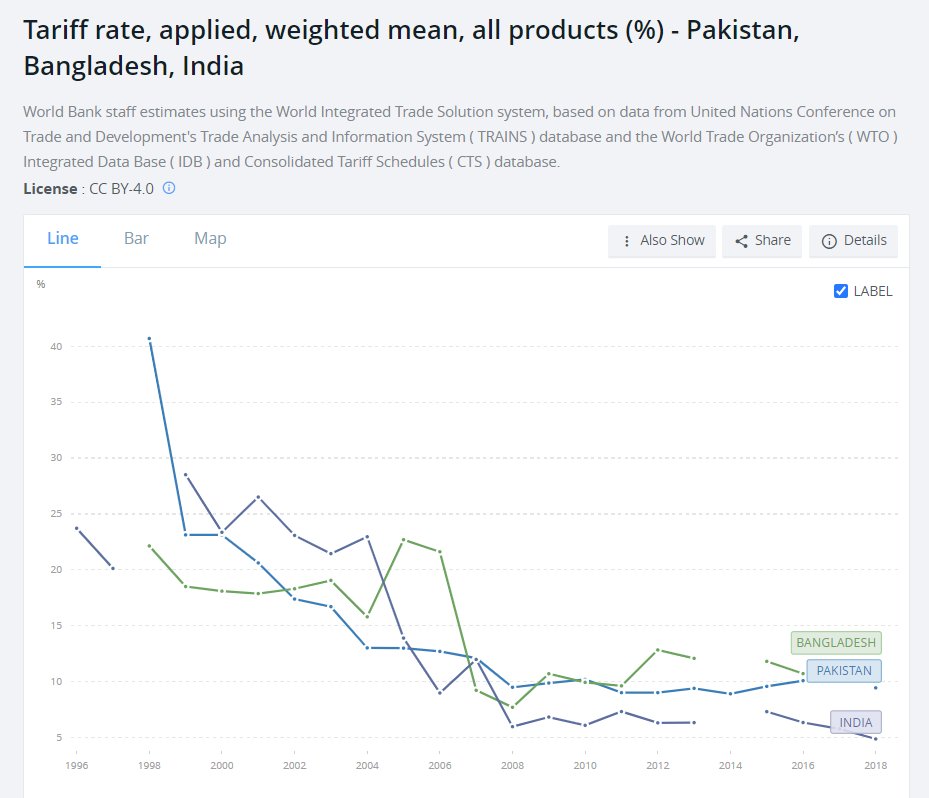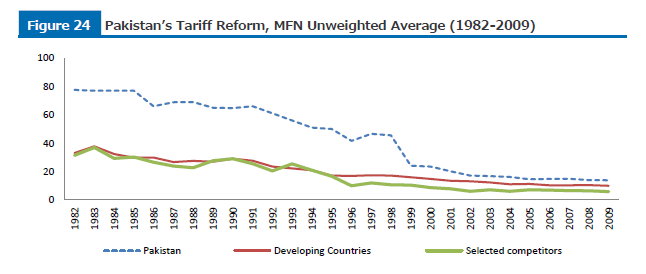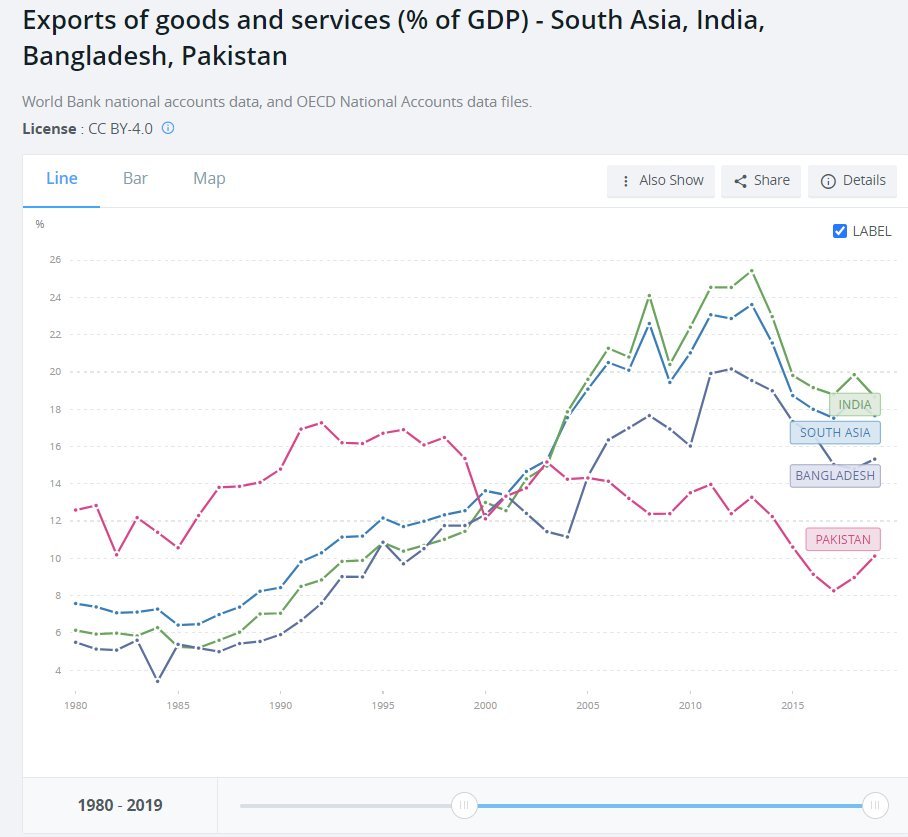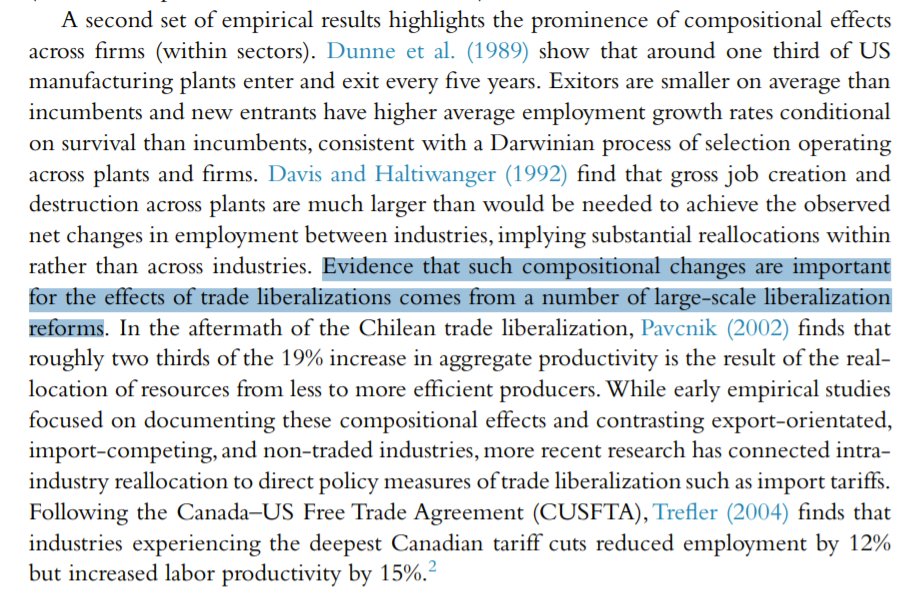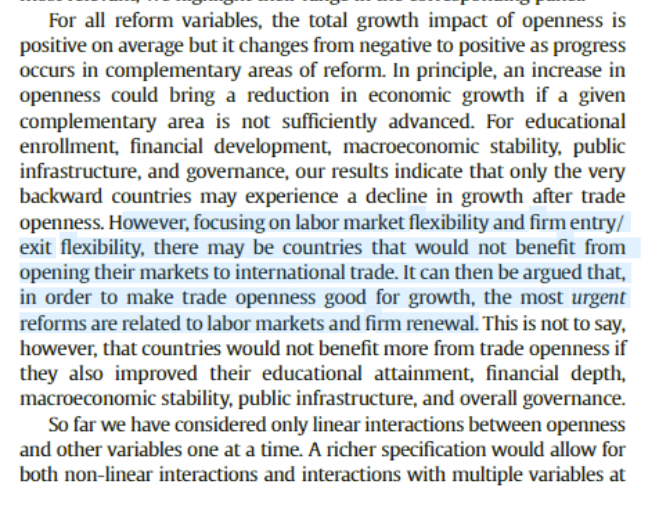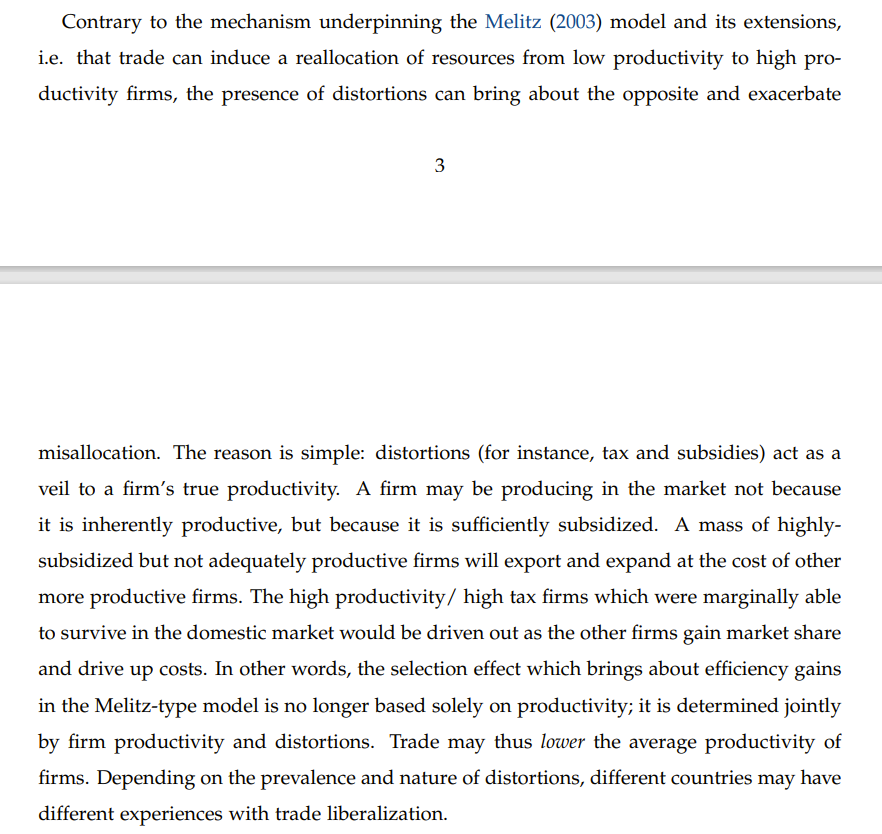(THREAD on limitations of tariff liberalisation: 1/n) Why did tariff liberalisation of late 90s & early 00s did not deliver as expected in #Pakistan? Short answer: Because our policies r specifically designed to preserve the prevailing structure of economy! Now the long answer: https://twitter.com/EconomistAadil/status/1344593839961550850
(2/n) First, some data. During late 1990s & early 2000s, Pakistan decreased its average tariff on imports by almost as much (if not by more) as did India & Bangladesh. In fact, according to a 2013 WB report, Pak decreased its tariffs by much more than other developing countries.
(3/n) Ideally, this should have resulted in a significant change in the structure of economy e.g. exports-to-GDP ratio should have increased. However, while exports did increase somewhat, exports-to-GDP ratio continued on its downward trajectory in Pak, unlike in India/Bng.
(4/n) What went wrong? To understand this, one must first understand how tariff liberalisation improves a country's productivity and, consequently, its export performance. For a lot more detail, see the work of Marc Melitz here: https://scholar.harvard.edu/melitz/publications?page=1
(5/n) It turns out that most of the gains frm trade liberalisation happen wen increased competition frm abroad causes less productive firms to go bust or decrease their production, while causing more productive firms to prosper. This applies to firms both within & across sectors.
(6/n) In the process, resources (i.e. land, labour, capital) move away from less productive to more productive firms. It is this 'reallocation of resources' which not only increases overall productivity of the economy but also improves the country's export performance.
(7/n) There is indeed empirical evidence for this. Chang et al. (2009) show that trade liberalisation has a positive affect on growth 'if' supported by complementary structural reforms. For e.g., if resources cannot move easily across sectors/firms, liberalisation may not help.
(8/n) Likewise, if businesses cannot operate relatively freely! In another paper, Bia et al. (2019) show that, in a worse case scenario, trade liberalisation can possibly do more harm than good if policymakers continue to support unproductive businesses ( https://www7.econ.hit-u.ac.jp/cces/trade_conference_2019/paper/dan_lu.pdf)
(9/n) Why? Because, if govt continues to support unproductive firms, opening up to trade will essentially mean that the same unproductive firms continue to do more & more of the production, thus effectively stopping resources from moving to more productive firms/sectors.
(10/n) Now it is possible that the govt ends up supporting businesses which are (or have the potential to be) more productive. In such a case, opening up to trade can do wonders. Arguably, this was the case for East Asian economies.
(11/n) But, if opposite is true (i.e. govt subsidising unproductive businesses), then neither doling out more & more incentives is going to deliver a miracle nor tariff liberalisation is going to help.
(12/n) In short, by keeping unproductive businesses alive, policymakers effectively deprive productive businesses of resources which otherwise would have moved away from unproductive to productive businesses. As a result, productivity level in the economy continues to remain low.
(13/n) Unfortunately, all indicators show tht this in indeed the case for Pak. Productivity growth continues to remain low. The export basket has failed to evolve towards more complex goods. See @EconomistAadil 's post. Also see the article by @javedhassan https://www.arabnews.pk/node/1776236
(14/n) The question policymakers need to ask is if they want to continue with policies which ensure tht the same businesses continue to thrive at the expense of other more productive firms/sectors? If so, then let's not expect a miracle & learn to live with a growth rate of 3-4%.
(15/n) Or, are we going to rethink our industrial policy and reorient it towards rewarding productivity, supporting product innovation through R&D, securing access to regional markets, facilitating coordination across firms/sectors, standardisation, and so on?
(n/n) To my mind, this is the central question we face right now. Can we design policies which will improve resource allocation across the economy? Or, will we stick with policies which r designed to preserve the existing structure of our economy? All other questions r secondary!
P.S. I hope this didn't get too complicated & the logic was easy to follow. I wanted to do this thread since many months but never had the time & energy to put all this in words. I also talked about this briefly during the recent IBA seminar (see here: https://sites.google.com/site/ajpirzada/newspaper-articles-1)

 Read on Twitter
Read on Twitter